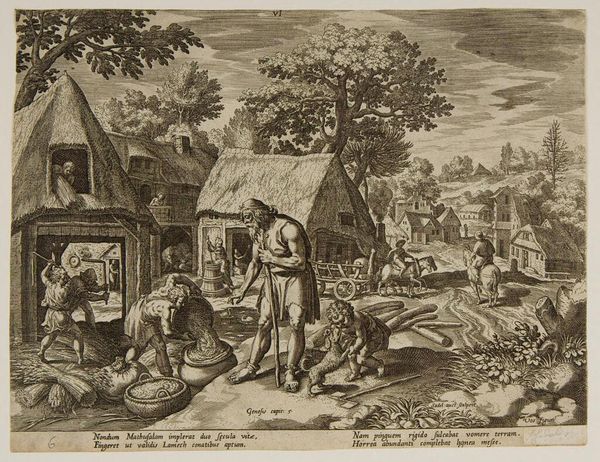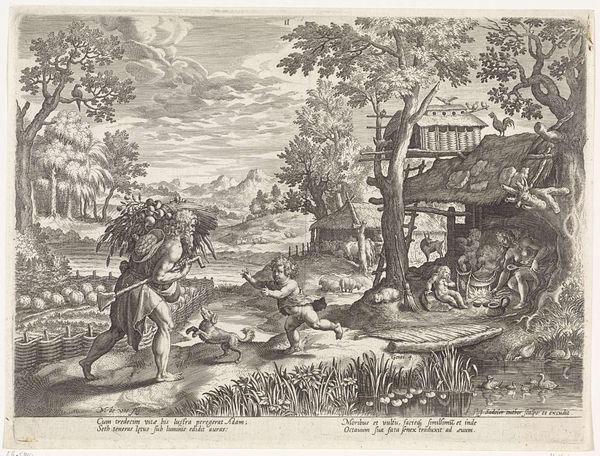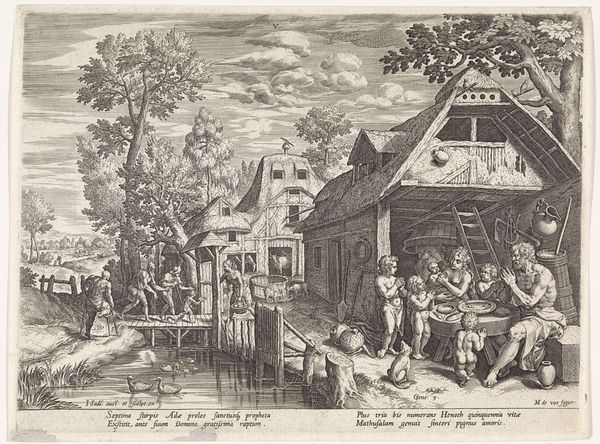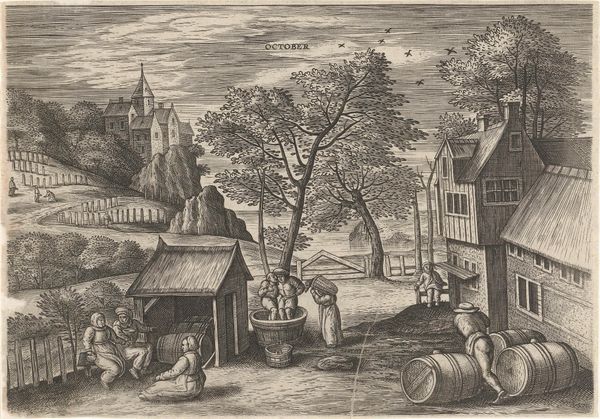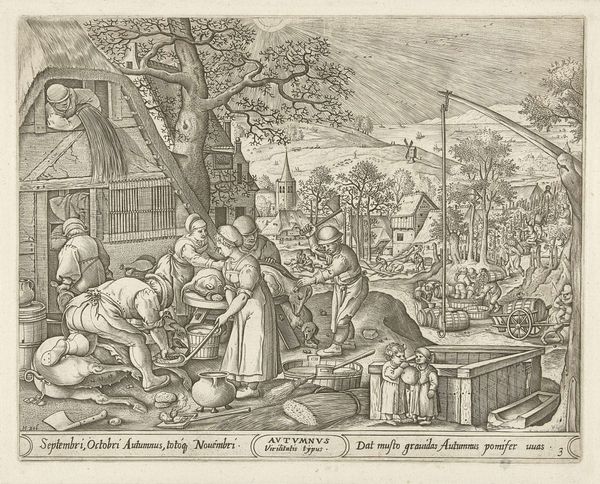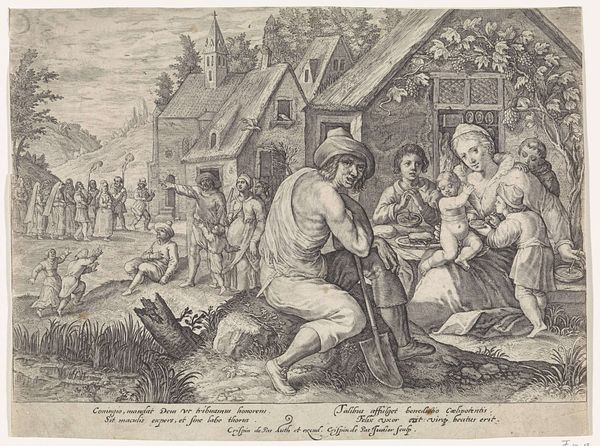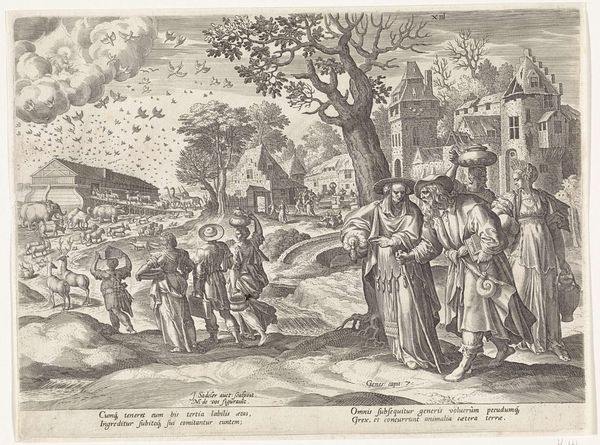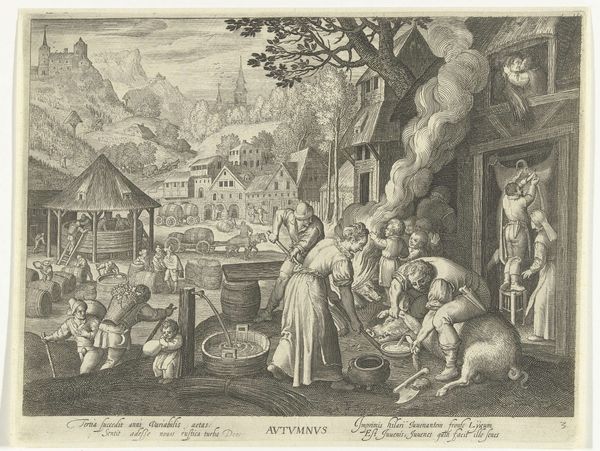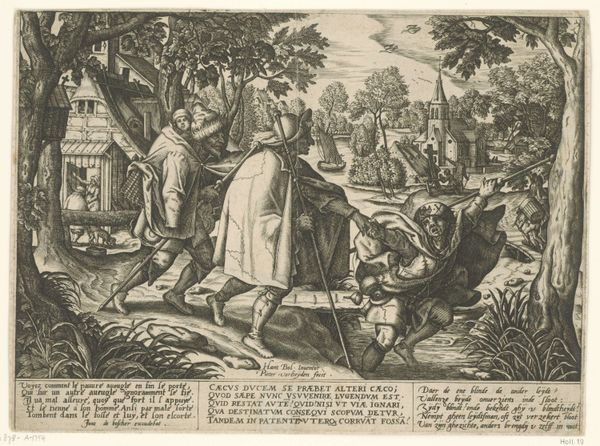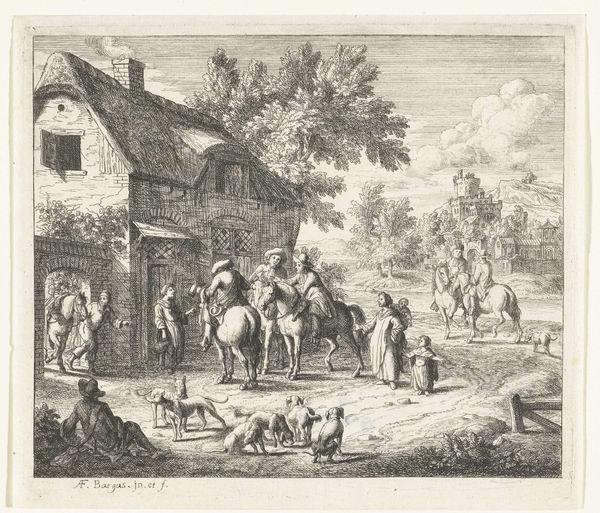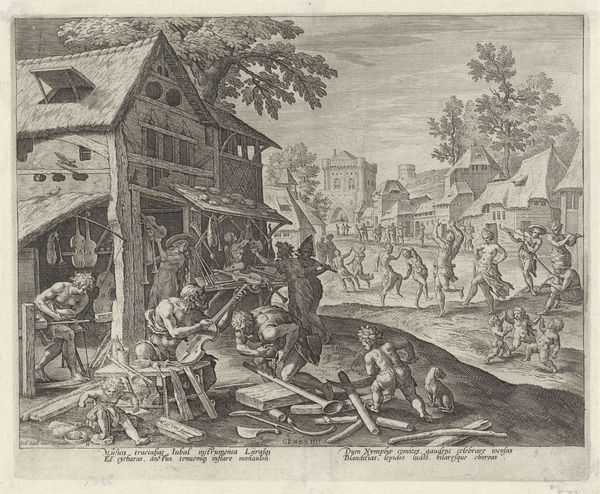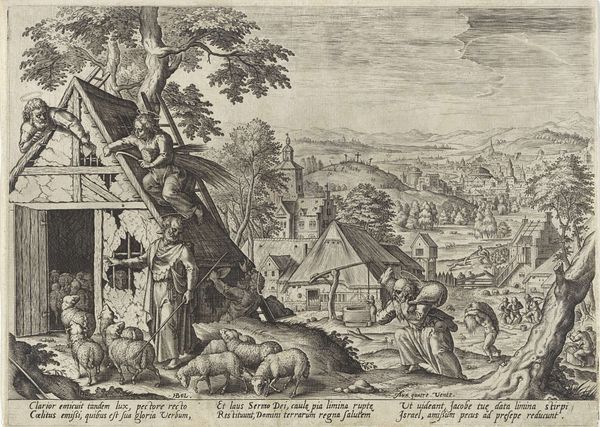
print, paper, ink, engraving
#
pen drawing
#
mechanical pen drawing
# print
#
pen illustration
#
pen sketch
#
landscape
#
paper
#
ink line art
#
ink
#
genre-painting
#
history-painting
#
engraving
Dimensions: height 211 mm, width 275 mm
Copyright: Rijks Museum: Open Domain
Curator: Welcome, everyone. We're standing before Johann Sadeler I's "Methuselah and His Children," a print created in 1586. It's currently held here at the Rijksmuseum. Editor: Wow, look at all that detail! It's a real tapestry of everyday life, almost overflowing with people and things. The overall tone feels… industrious, but tinged with something ancient and a little bit stern. Curator: Sadeler, working from a design by Maerten de Vos, was really embedding biblical narratives within a very specific visual culture. Prints like these weren’t just aesthetic objects; they were vital for disseminating stories and moral frameworks throughout society. Editor: You can certainly sense that weight. The figures almost feel sculpted out of the scene. And yet, there’s this remarkable liveliness, especially in the background. I keep getting drawn back to the details like the guys wrestling in the lower left, it tells me that the human element hasn't changed too much over the centuries. Curator: It’s interesting how the artist situates this venerable biblical figure within a very contemporary, late 16th-century, setting. We have Methuselah, who according to the Hebrew Bible lived to be almost 1,000 years old, rendered amidst the labor of daily life in a northern European village. Editor: It’s kind of funny, actually! He's got his walking stick, looking a bit tired, almost as if he's supervising the work, when maybe he should get out there and till the land, himself? All those details make it quite a busy picture. Curator: That tension speaks to the complex social function of art at the time. This engraving operates on multiple levels simultaneously. It’s devotional, instructional, and also serves to uphold specific social hierarchies and ideals of labor. The image also speaks about how history painting or genre-painting can both fit in the same piece of art. Editor: Absolutely, I mean, looking at it now, one could interpret this through any kind of modern lens as well: sustainability, societal balance, agriculture… It continues to inspire creative readings and imaginative connections. Curator: Indeed, seeing how different values are embedded, promoted, or obscured is precisely the kind of cultural history of art that I believe matters the most. Editor: I think I can appreciate that this piece encourages to stop and linger in this slice of the 16th century to find some wisdom.
Comments
No comments
Be the first to comment and join the conversation on the ultimate creative platform.
